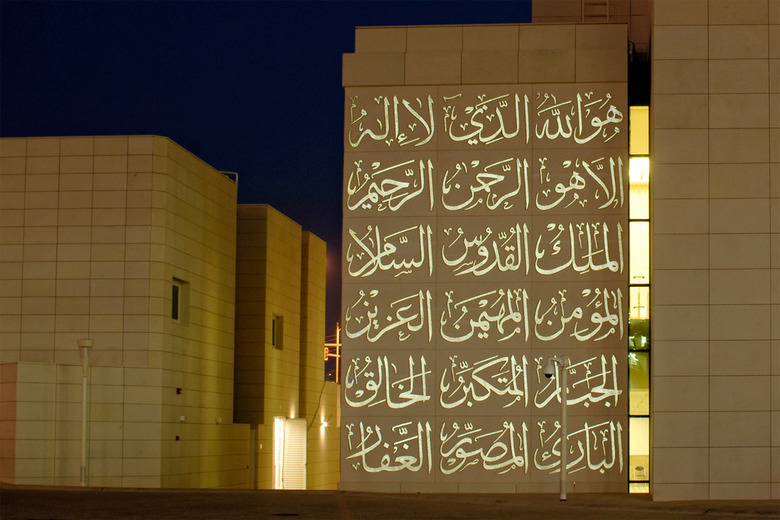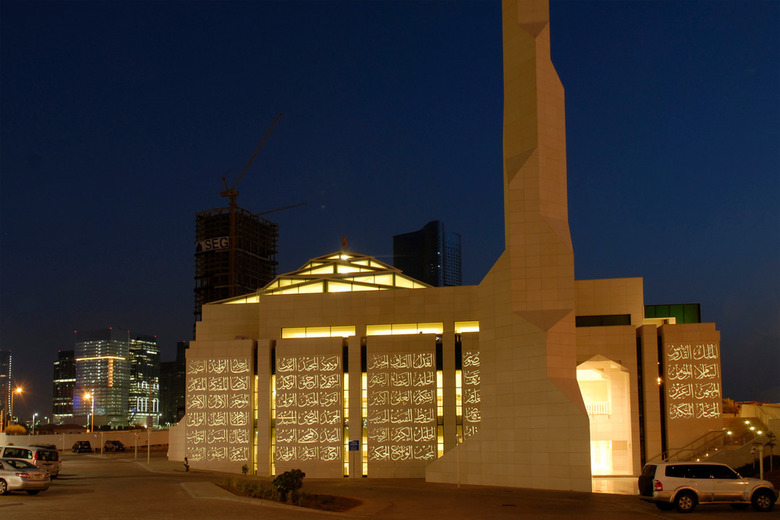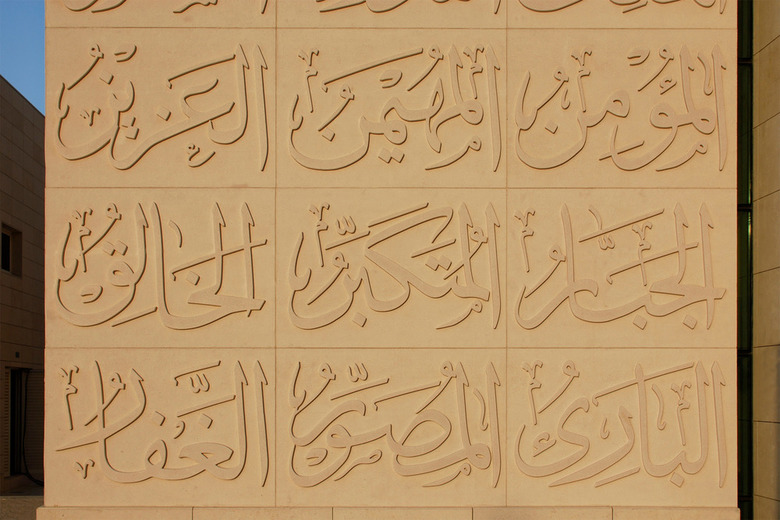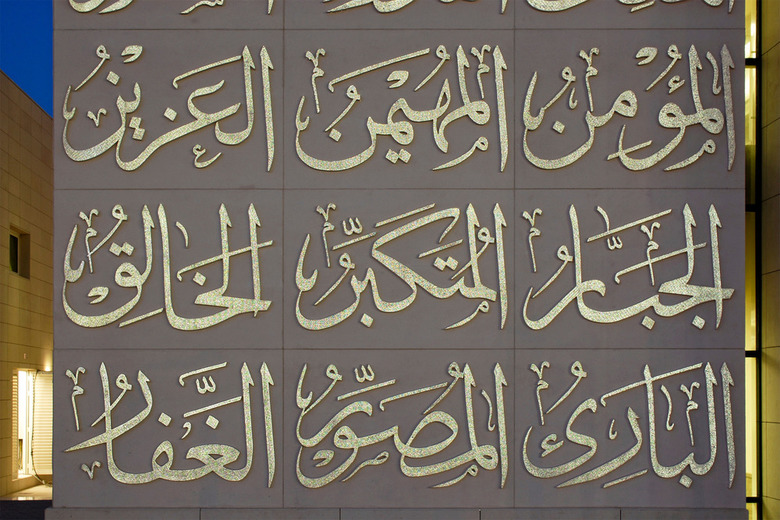Light Emitting Concrete in Abu Dhabi
A facade with calligraphic letters set into light emitting concrete, designed and produced by LUCEM Lichtbeton, was recently completed at the Al Aziz Mosque in Abu Dhabi, UAE.
The mosque was designed by APG Architecture and Planning Group for Hasan Abdullah Mohammed Group (HAMG), which has donated mosques as part of their private developments in the UAE. APG's design for the three-story building that accommodates 2,270 worshipers wraps part of the facade with calligraphic characters representing the 99 different names for God, as mandated by the Koran. Projecting 30mm (1-1/4") beyond the face of the panels – typically sized 180 x 140 cm (6' x 4-1/2') – the characters cast shadows during the day and glow at night, therefore having a presence at all times of the day.
To achieve the glow, the LUCEM Lichtbeton panels are backed with OSRAM LED lighting modules, similar to LUCEM's storefront application in Berlin that we featured last year, minus the color-changing aspect of that smaller project. Although the operating life of LED lights exceeds 50,000 hours, for ease of maintenance LUCEM developed a cable system that allows the LEDs to be changed out when needed without removing or affecting the calligraphic panels.
APG architect Yasser Fouad aimed to integrate the building into its Reem Island context, so LUCEM pigmented and sandblasted the panels to match the local stone used elsewhere on the facade. So during the day the mosque takes on a nearly monolithic appearance, but at night the light emitting concrete panels glow a golden hue against the building's earthy tones.
As projects like the storefront in Berlin attest, architects have used the new technology of light emitting concrete (dating back to its 2006 unveiling) toward abstract aims. But the Al Aziz Mosque in Abu Dhabi illustrates the communicative potential of the medium, which will surely see similarly expressive applications as products like LUCEM's become more affordable and widespread.




